Log in or create new account to save this product to your wishlist.

The Ultimate Guide to Choosing the Perfect Hedges for Your Garden
Hedges offer privacy and protection from the weather. But which hedge do you choose? Find out in our ultimate guide to choosing the perfect hedge.
🌱 All important maintenance moments for your lawn during the year. Leave your email and we will send you the lawn calendar for free.
Enter your email
Receive the lawn calendar in the mail
Enjoy a green lawn all year round!

- Order by 2PM = shipped today
- 250.000+ satisfied customers!
- 60 day satisfaction guarantee
Are you looking for a way to delineate the borders of your home and garden? Sure, a fence or wall offers good privacy, but does it bring an attractive aesthetic to your outdoor space? Maybe you need hedges — a bush or tree pruned into a border that offers all the protection and privacy of a wall or fence — but more.
- Selecting the Ideal Type of Hedge
- Factors to consider before choosing hedges
- Beautiful Hedging: A Detailed Look
- Tips for planting and caring for hedges
- FAQs
A hedge is alive — it grows dense for privacy but offers a much-needed habitat for wildlife in the urban and suburban spaces we call home. But which border do you choose? And how do you care for them?
This article explores how to choose the best hedges for your garden. We will delve into the world of hedging plants, uncovering their types, maintenance needs, and the best conditions for their growth.
Ready? Let’s go!
Selecting the Ideal Type of Hedge

Every garden has its personality, and the type of hedge you choose should reflect that.
Indeed, garden hedges come in various forms, each with unique characteristics.
Evergreen Hedges
Evergreen hedges offer year-round privacy and are a favourite among many gardeners. The density of the foliage remains relatively consistent throughout the year. However, their appearance may change with the seasons as they bear flowers and fruits during the spring, summer, and autumn.
However, evergreen hedges aren’t without their maintenance demands. They require regular (at least annual) pruning, particularly for conifers — this helps them maintain their density, shape, and vitality.
More about pruning later.
Here’s a list of some of the most popular evergreen hedges:
- Box plant
- Leyland cypress
- Bay laurel
- Yew
- Holly
- Privet
- Thuja
- Holly
Deciduous Hedges
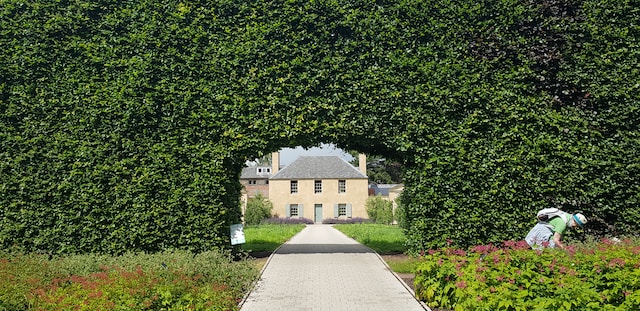
Deciduous hedges, on the other hand, shed their leaves in winter. This reveals their distinct skeletal structure, which can be a beautiful sight.
They may not provide year-round privacy like their evergreen counterparts. Still, they remain effective as windbreakers during winter, preventing potential damage to surrounding plants caused by harsh winter winds.
Deciduous hedges are more forgiving when it comes to pruning, although they’ll require cutting back now and then to remove dead and diseased wood to help maintain the plant’s vigour.
Examples of deciduous hedges include:
- Beech
- Hornbeam
- Forsythia
- Rugosa Rose
- Hawthorn
- Hardy fuchsia
Flowering hedges
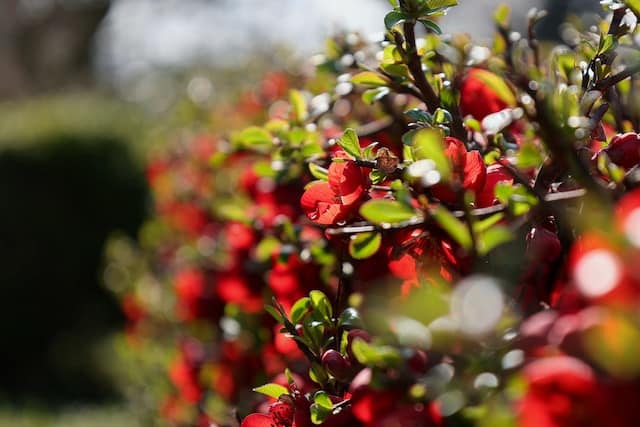
Some consider deciduous and evergreen hedges boring green blocks that maintain the same appearance for most of the year. However, flowering hedges offer the privacy of an evergreen with added colour and spectacle.
Typically considered an “informal” hedge, flowering hedge varieties attract pollinating insects and wildlife in the summer, with bountiful and beautiful berries in the autumn.
And flowering hedges require less clipping than privets and conifers while filling your garden with fragrant flowers and attractive, aromatic foliage.
Some of the most popular flowering hedges include:
- Mexican orange blossom (Choisya)
- Hawthorn
- Fuchsia
- Olearias
- Potentilla fruticosa
- Lavender (if pruned into shape)
Why choose a deciduous hedge over evergreen?
Evergreen hedges are typically chosen for year-round privacy. But you might not want a hedge for privacy; you may just want a beautiful, low-maintenance plant that divides one area of your garden from another.
Deciduous hedges generally demand less maintenance, other than a very occasional clipping, to keep them in shape. However, evergreen hedges require more regular pruning to stay healthy and attractive.
Additionally, deciduous hedges change with the seasons — they take on a stunning red, bronze, or even golden leaf in autumn and often provide sustenance for the birds and good seasonal protection for wildlife.
Factors to consider before choosing hedges
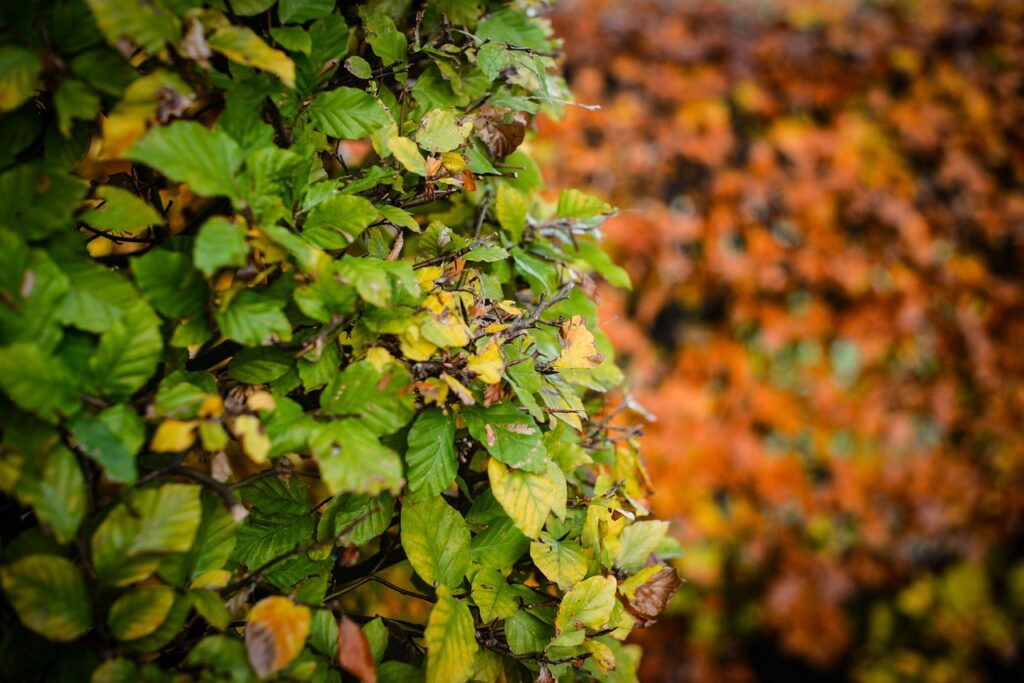
When planning for a hedge, it’s crucial to consider the specific needs of your garden.
The primary factors to consider include:
Desired Hedge Height
The height of your hedge can contribute significantly to the overall appearance of your garden. It will also determine the amount of maintenance required.
Of course, larger hedges offer greater privacy, while smaller hedges can help divide a more extensive garden into separate zones.
Large hedges include:
- Hornbeam
- Leylandii
- Thuja
- Cherry laurel
Smaller hedge varieties include:
- Boxus
- Box-leaved honeysuckle
- Lavender
- Japanese Holly
Soil Conditions

The soil type in your garden is an essential factor in plant growth. So, understanding your soil condition is vital to choosing the right hedging plants that will thrive in such environments.
For example, you may have sandy soil, which drains quickly and may require more regular fertilising; or heavy clay soil, which can become waterlogged but retains its nutrients well.
Hedges that thrive in sandy soil include:
- Thuja
- Viburnum
- Yew
- Beech
- Norway spruce
- Box
- Choisya
Hedge plants that do well in well-drained clay soil include:
- Holly
- Berberis
- Green or Purple Beech
- Alder
- Amelanchier
Find out more about your particular soil type in our expert article: How to Improve Your Soil: Analysing your soil type.
Local Climate
Check the types of hedges that grow well in your local climate and soil conditions. This will give you a better idea of what could work for your garden.
If in doubt, ask an expert in your local garden centre — they’ll have a good idea of the plant types that suit your region.
Maintenance Level
Consider the level of maintenance that you are willing to commit. Some hedges require more care than others, including regular watering, pruning, and pest control.
In general, evergreen hedges require more regular pruning than deciduous or flowering hedge varieties, so if you’re looking for ease, avoid evergreen.
However, all hedges will require some aftercare after planting, so always read the label before you buy your young plants from the nursery.
Beautiful Hedging: A Detailed Look
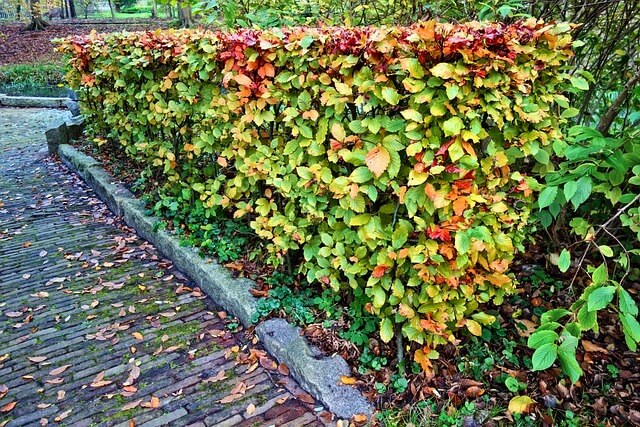
These hedges are favourites among garden enthusiasts while providing a safe haven for garden wildlife, especially during the colder months.
The Blooming Ceanothus
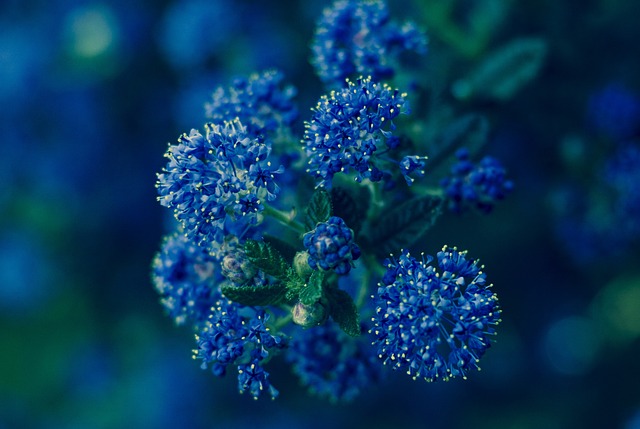
The California lilac, also known as Ceanothus, is an excellent choice for an informal, flowering hedge.
It thrives in a sheltered, sunny position and requires light pruning after flowering. These super-attractive plants emit a delicious aroma, similar to Coca-Cola. And you’ll find bees flock to this plant in the summer.
The evergreen foliage remains attractive even when the beautiful flower clusters have dropped.
The Resilient Prunus Lusitanica
The Portuguese laurel, or Prunus lusitanica, is a hardy plant with lustrous green leaves that beautifully contrast its maroon-coloured stems.
This plant grows large enough to offer excellent privacy and is super-easy to grow. And this hardy variety can withstand severe pruning. However, you will need to prune fairly regularly as the plant can grow out of control reasonably rapidly.
The Aromatic Hedge Germander
Hedge germander, or Teucrium x lucidrys, is an aromatic Mediterranean plant that enjoys the same growing conditions as lavender – full sun with good drainage.
This low-growing plant is a lovely choice for a short, informal hedge, which should be clipped back after flowering.
This drought-resistant hedge grows in dappled shade or full sun in a south or west-facing aspect.
Expect small pink flowers in early summer and dark green, crinkle-edged, glossy leaves.
Bright and Beautiful: The Griselinia
The Griselinia littoralis (or New Zealand broadleaf) is a bright choice for those looking for a splash of colour in their hedges. Its rounded, apple-green foliage is a real eye-catcher.
This fast-growing evergreen is best suited to a sunny, sheltered spot and is also tolerant of salt winds, making it perfect for coastal gardens. But beware: this broad-leafed variety can grow up to 8m high! So, be prepared for regular cutting back.
The Classic Box Hedge
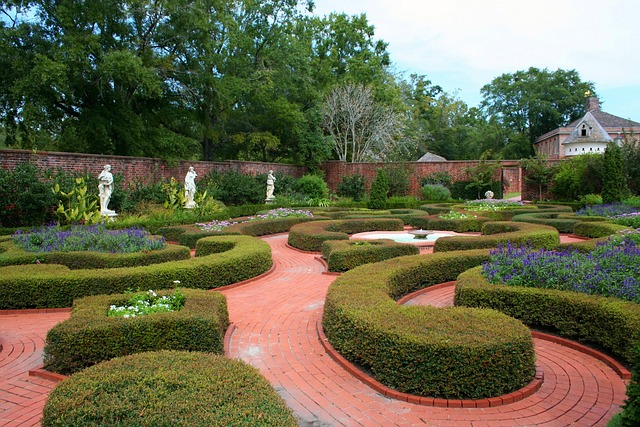
The box, or Buxus sempervirens, is a classic evergreen hedge plant known for its small, rich green leaves. It can be clipped into crisp, elegant hedges.
However, it’s essential to keep an eye out for potential pests such as box blight and box tree caterpillar.
For more info about how to care for a box plant, check out our expert articles.
The Thorny Holly
Holly hedges are perfect if you’re after a thorny, impenetrable barrier. They’re also native to the UK, adding a touch of tradition to your garden.
This evergreen bush looks great all year round, developing berries that the birds will love in autumn and winter.
The Majestic Holm Oak
The Holm Oak, or Quercus ilex, can eventually grow into a majestic evergreen tree but can also be maintained as an attractive, wind-resistant hedge that tolerates shade.
You’ll need to prune regularly to maintain your holm oak as a hedge. With a medium growth rate of around 20-30cm per year, it won’t overtake your garden too quickly, but it responds well to pruning.
The Revered Yew
Yew hedges are slow-growing evergreen conifers that make a fantastic hedge plant.
With finely divided foliage that you can clip to form dense hedges, yew is ideal for a low-maintenance garden.
However, yew — of course — is a tree and needs regular pruning to ensure it maintains its hedging shape. Check out our expert yew pruning guide for top tips for shaping your bush.
The Fragrant Pittosporum
Many Pittosporum species make lovely, evergreen hedges. They’re known for their beautifully scented flowers and attractive foliage.
Trim them into shape in late summer or autumn for the best results.
Tips for planting and caring for hedges
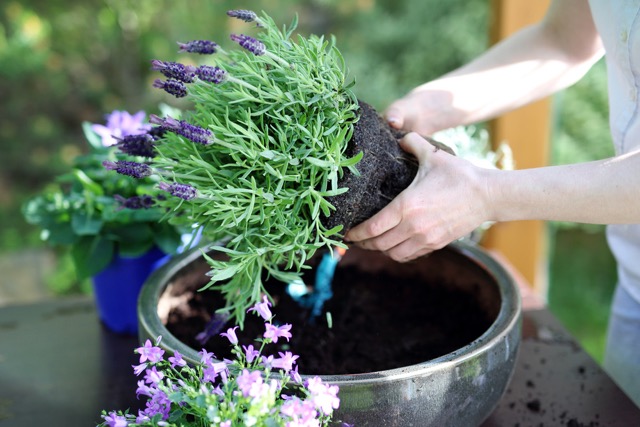
Planting and caring for hedge plants require more than just green fingers; it’s about understanding the specific needs of your plants and providing an environment conducive for their growth.
First, it’s crucial to choose the right plant. Many hedge plants are available, so pick one that suits your climate, soil type, and aesthetic preferences. Buying smaller plants is advisable as they establish faster and are more cost-effective.
When planting, space the plants correctly, according to the instructions that come with the nursery plant. This is vital for the plants to grow together, forming a dense hedge. The ideal distance depends on the species, but generally, plants should be spaced about half their mature width apart.
Dig a hole twice as wide and deep as the root ball, place the plant in, and backfill with the dug-out soil. Water the plants thoroughly after planting.
After planting, regular care is essential. This includes watering, fertilising, and pruning. Water deeply but infrequently to encourage the roots to grow deep into the soil. Overwatering makes the roots lazy.
Help retain moisture around the plant by adding mulch, which also protects the roots from frost.
Fertilise during the growing season, typically in spring and autumn and pruning as necessary to maintain the shape and density of the hedge.
Remember to follow the Golden Rule of Pruning: allow the plant’s natural growth pattern to dictate the process. This will lead to healthier, more attractive hedges.
FAQs
Boxwood, Privet, and Yew are popular for formal gardens due to dense growth and suitability for pruning. For a more natural look, consider Spirea, Forsythia, or Hawthorn, known for their beautiful flowers. Evergreens like Arborvitae or Holly provide year-round privacy and colour. If you want a flowering hedge, consider varieties like Lilac or Rose. For fast-growing hedges, Leyland Cypress or Green Giant Thuja are great options.
The fastest-growing hedge plant is the Leyland Cypress (Cupressocyparis leylandii), which can grow up to 3-4 feet per year, providing a dense and private barrier. This species is ideal for quick privacy boundaries.
The Privet hedge plant often requires the most pruning due to its dense foliage and fast growth rate. It needs regular trimming to maintain its shape and prevent overgrowth, usually after its flowering period.
Any questions?
I hope I’ve given you lots of ideas about hedges that might suit your garden. But if you have any questions, add a comment below or send us an email. We’ll reply as quickly as we can!
Or check out our comprehensive Help & Advice section for extensive expertise on all things lawn and garden!
Thanks for reading.
-
Orchids: A Complete Guide on How to Care for ThemWant to give your orchid the best possible care? Discover essential tips from placement to watering and pruning. Learn everything you need to know!Read more
-
Growing Wisteria Made Simple: From Planting to Perfect BloomsWith blossoms like a purple waterfall, Wisteria sets an almost magical and colourful mood. If you want to grow this beauty in your garden, you’ll need a bit of patience. Don’t worry, it will most definitely pay off.Read more
-
How to Build a DIY Greenhouse: A Practical Guide for Smart SpendersImagine extending your growing season throughout the year, nurturing tender plants regardless of the weather, and creating a personal garden sanctuary. This is precisely what a DIY greenhouse offers you. Let’s learn how to build one.Read more
-
How to Grow Eucalyptus in British GardensWith a little love and care, eucalyptus trees can thrive in English gardens. Since they don’t germinate well without proper help, there are not considered invasive. So, there is no reason not to plant them if you enjoy their looks.Read more
-
Transform Your Garden with All-Year-Round Flowering PlantsDid you know you can enjoy blooming flowers even in January? With the right selection of all year round plants, there’s no need to wait until spring to add some colour to your garden.Read more
-
How to Create a Butterfly Garden: A Simple Guide for British GardensThe UK's butterfly population includes 59 different species. These beautiful winged creatures face a steady decline because of habitat loss, pollution and changing weather patterns. Your garden can become a vital link between nature reserves and natural habitats. Let’s explore how.Read more
-
Volcanic Rock Dust for Your Garden—Application and TipsDid you know that volcanic rock dust is a brilliant organic soil improver? This article explains exactly what it's good for and how to use it properly.Read more
-
How to Use Landscape Fabric ProperlyIf weeds or erosion in your garden are troubling you, landscape fabric might be the solution. We’ll explain how and when to use it properly, just keep on reading.Read more
Leave a comment
Your answer will be displayed on the site and the interested party will be notified by email.
Leave a comment
Have a question or want to share your experience? Leave us a comment.

- Order by 2PM = shipped today
- 250.000+ satisfied customers!
- 60 day satisfaction guarantee

- Order by 2PM = shipped today
- 250.000+ satisfied customers!
- 60 day satisfaction guarantee

🌱 All important maintenance moments for your lawn during the year. Leave your email and we will send you the lawn calendar for free.
Enter your email
Receive the lawn calendar in the mail
Enjoy a green lawn all year round!






















Comments (0)
There are no comments yet. Well then, what are you waiting for to
Be the first to write your comment!inaugurate this pretty page?
Do you have some comments?